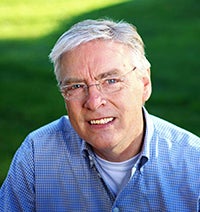Guest Column: There’s reliability in a vegetable garden
Published 8:14 pm Friday, May 29, 2020
|
Getting your Trinity Audio player ready...
|
Guest Column by Tim Penny

Tim Penny
Growing up near Kiester, my family had beautiful vegetable gardens. Between my mom, my aunt and grandfather, we grew tomatoes, carrots, onions, rhubarb, potatoes — pretty much anything you can think of that could end up as a meal on our plates. Every spring, summer and fall, the garden and its cycles of growth and nourishment were a constant presence in our lives, regardless of what was happening around us. Today, many of us are grasping for anything reliable to stabilize us during this unpredictable time. This year, in particular, the act of growing food, and the predictability of the growing season, brings with it a welcome sense of normalcy.
Today it is a tradition for my now-retired brothers to continue keeping a garden at the home farm. Visiting the garden, which I try to do regularly throughout the summer, reminds me of what I loved about gardening as a child. I enjoyed the process of planting potatoes — cutting up a potato, planting the “eye” facing up, and then covering it with dirt. Strawberries were another favorite because you could pop some in your mouth while picking them for making jam later. Gardening was an intergenerational experience for me. My siblings and I especially enjoyed planting, weeding and harvesting food alongside my grandfather. My mom and grandmother canned vegetables every year to carry us through the winter. Dinners were planned around what was available in the garden during warm months, and what was preserved in the cellar in the cold months.
Whether you grow some of your own food or not, the growing season provides a sense of dependability — we know that asparagus will always come up in the spring, and that summer brings sweet corn and BLTs to be eaten with fresh tomatoes from the garden. Our produce farmers play a huge part in creating that stability for us. Despite the current crisis, they are out in the fields and gardens, planting, weeding and nurturing the food that we will eventually eat. However, many of these farmers are facing new challenges as their standard distribution channels, like farmers markets and regional restaurants, have been disrupted.
At Southern Minnesota Initiative Foundation, we recently awarded three organizations $10,000 each through our Grow A Farmer Fund to support local food producers in our 20-county region whose businesses have been impacted by the current crisis. These organizations are working to support farmers in southern Minnesota: The Cannon River Chapter of the Sustainable Farming Association of Minnesota in the Cannon River Valley region, Renewing the Countryside (RTC) which covers the entire region, and Driftless Grown, an organization that is working with RTC to support farmers in southeast Minnesota. The growers that are part of their networks produce blueberries, vegetables, cider, cheese, meat, honey and more.
With the new limits on face-to-face sales, some farmers are looking to these organizations for assistance with creating online stores for their products or with developing plans for curbside pickup. Others are in need of additional cleaning tools like handwashing stations. These farmers are also receiving training in social media marketing, branding and website development. These are important skills that will be of value for the success and sustainability of their businesses long after this crisis is over.
The next time I visit the family garden, the squash and pumpkins will be vining, the tomatoes will be bushed out, and peppers and onions will be thriving. Thanks to my retired brothers, the garden will be something to admire, and it will also be a reminder of the many local food producers and processors who year-in and year-out provide fresh food for our tables.
As always, I welcome your comments and questions. You can reach me at timp@smifoundation.org or 507-455-3215.
Tim Penny is the president and EO of Southern Minnesota Initiative Foundation. He represented Minnesota’s 1st Congressional District in the U.S. House of Representatives from 1982 to 1994.


